Sun-Earth Day Presents: Ancient Observatories, Timeless Knowledge
Canada, Ottawa- Canada's Capital
Organization: The Ottawa Valley Astronomy and Observers Group (OAOG)
Our very active amateur astronomy group is dedicated to helping people who are just starting in this wonderful hobby and to bringing Astronomy to the general public. We do many sidewalk sessions in a Chapter's parking lot. Each time, many (75-300) people visit to enjoy safe views of our Sun, the Moon and many other heavenly delights. International Astronomy Day in April is a major event for us. We have displays, Solar viewing, an evening star party, etc. The last couple of years, we had approx. 2500 people come to share with us. We often do presentations for groups (Guides, etc.) and in class for schools. The Sun is always a part of these. For March this year, we have two events planned for Scouts throughout our area, one school presentation and viewing session (so far), and sidewalk sessions will be held when the weather allows. Our participation and presentations are always free. For Astronomy Day, we set up fairly large displays. The material that I have received over the years from Sun-Earth Connection Education Forum is a large part of these displays. Safe Solar viewing information is prominently displayed.
Mary Brown (oaoger at netscape.ca)
France
Le 20 mars 2005 aura lieu la 5 ème édition du jour Terre-Soleil initié par la NASA. Le thème de cette année: l'observation du Soleil à travers les temps.
Déifié par les Egyptiens,les Mayas et les aztèques le Soleil a de tout temps préoccupé les hommes. Ils ont cherché par tous les moyens à dévoiler les mystères de cet astre sans qui la vie n'aurait pas été possible, développant ainsi de Coppernic à Kepler les théories de l'astronomie moderne. Avec les progrès de la technologie, télescopes et satellites ont permis aux astrophysiciens d'en savoir plus sur les vents solaires ou les aurores boréales et ont pu poser les bases de la physique solaire, mais tout n'est pas encore révélé sur les énigmes du Soleil...
Le réseau des bars des sciences franciliens célèbre à sa façon cet évènement en organisant plusieurs rencontres au mois de mars et avril sur des thèmes proches du sujet proposé:
- vendredi 11 mars -20h30 : Le Soleil à travers les temps à la MJC François Rabelais de Savigny sur Orge (avec Karl-Ludwig Klein, chercheur au LESIA et Denis Savoie, historien des sciences directeur du planétarium et du département astronomie-astrophysique du Palais de la Découverte)
- jeudi 17 mars - 20h30 : Les énigmes du Soleil au café de Flore Paris 6ème (avec Milan Maksimovic, Brigitte Schmieder chercheurs à l'observatoire de Meudon et Sylvaine Turck-Chièze Chef du laboratoire Plasmas Stellaires et Astrophysique Nucléaire au CEA)
- jeudi 22 mars -18h30 : Soleil, ami ou ennemi ? Abracadabar Paris 19ème (avec le dr Jean-Pierre Césarini, généticien et président de l'association Sécurité Solaire et Roger Prat professeur à Paris VI et directeur du labo "biologie et multimédia")
- jeudi 24 mars - 19h30 : Soleil, de l'astronomie à l'astrophysique à la FNAC de Vélizy (avec Karl-Ludwig Klein et Guillaume Molodij chercheurs au LESIA)
- mercredi 30mars - 19h30 : De l'origine ... à l'Entrepôt Paris 14 ème (avec Sébastien Charnoz, astrophysicien et maître de conférence à l'université DENIS Diderot
mercredi 13 avril - 19h30 : Les aurores boréales au Père Tranquille Paris 1er (avec Renée Prange, chercheur au LESIA, Fabrice Mottez et Dominique Delcourt, chercheurs au CETP à l'institut Simon Laplace et Gilles Dawidowicz auteur du livre " les aurores boréales et australes ")
et un peu plus tard
- vendredi 27 mai -20h30 : De la Terre à la lune à la MJC Maryse Bastié de Viry Chatillon (bar junior)
- jeudi 16 juin - 19h30 : Soleil, un ami qui vous veut du bien à la FNAC de Vélizy (avec Jaime F.Angulo, radiobiologiste au CEA et Alain Sarrazin DR CNRS à l'institut Gustave Roussy).
Pour plus de renseignements sur le SUN EARTH DAY 2005
CONTACT:
Brigitte Gaaloul
06 18 28 79 76
combarscience@yahoo.fr
www.reseau-bds.com
Romania- Constanta
Student Opinion
Some of my classmates, our teacher and I went to the Planetarium, to find out some very interesting things about the Sun, and stars, about the universe we are living in and all the attempts were made to discover the cosmos.
The International Day of the Sun, made us, talk and focus our attention on it.
I was impressed by the hole action made by our teacher, because I found out many new things I didn't knew until then, things that have really opened in my soul the desire to know all about the world around me.
Although we had a hard time getting up so early, I think it was worth it, I would do it again any day, any time, any place.
We, were very happy to have the occasion to see the whole sky with all the stars and constellations, thing, that for me, was very special and unique-I hadn't had this chance before. We also had the possibility to ask all we wanted to know about the stars, about our star signs, about the Sun, the projects that have been developed to explain the unknown elements of the universe.
We were also told about Genesis and we were able to see a video about Nasa's project, which was very very interesting.
At the end of all this, we were asked to fill some tests to see what we have learned during this action, made by our teacher of physics, and I'm really proud to say, that was the moment when I realised I know many things about this subject :).
After taking some pictures, we all went home, talking and discussing, sharing between us the impressions and details of this project, hopping one day we'll have the chance to do it again, because this despite the fact that was a very educational moment, was also a possibility to know new kids or to make the relations between us stronger.
Simona,16 years old
Student Opinion
About the project "Sun the Source of Life on Earth": I liked the project very much because it had an informational theme. I've learned lots of new things about the sun and things that happen in space. I'd like to participate at more of this kind of projects
Bogdan, 16 years old
Student Opinion
The action regarding the Sun was a good thing because I've learnt more things about it and I had a good time at The Planetarium.
I'd like to know more about the Solar System and the Solar Corona, because you've done some researches about this kind of things and the magnetic field so the kit you sent to us was real useful.
Doru, 17 years old
 Liceul Teoretic Constantin Noica
Liceul Teoretic Constantin Noica
Str. Dealului NR. 6, 550010 -SIBIU,
TEL.+40 Ð 269 / 21.15.98 FAX +40 Ð 269 / 21.49.78
E-mail
The Summary of the Activities of "Constantin Noica" Highschool for the Week "Sun Earth Day"
We consider that in a modern society, astronomy belongs to the young people's general knowledge, motivating them and this being a good way of drawing them towards science.
Astronomy attracts young people through to the beauty, grandeur, specteculosity, exactnes of the phenomena, which studies philosophical problematisation of our existence(where are we coming from and where are we going?), a high level of disciplines being noticed, although in Romania astronomy is not an obligatory subject at the medium education level.
The National Olympiad of Astonomy being at the third edition(after Barlad 2003, Cluj-Napoca 2004) proved that our students study passionately this subject, achieving better and more performances year by year.
The excellent results got under these conditions by our students made us take part in educational projects in schools.
Thus it is the third year when our school is implied in the educational projects proposed by NASA and ESA for the promotion of astronomy. Until now we got them by means of Astronomical Institute of Academy from Bucharest, but we are satisfied that now we get them directly from you and we send you some relevant images of the activities made by our students in Sibiu between 17th March Ð 10th April:
- Spring Equinox Ð presentation of the phenomenon Ð Julia Gradinar XB grade
- Watching the site Sun-Earth Day on the computer Ð students of the Ixth Ð Xth grades
- Presentation of the materials delivered by you to the students from the schools in Sibiu.
- Presentation of essays having themes as: "The Sun" studied by means of new technologies in modern observatories; "Solar Auroras" - students from the Ixth grade
- Exhibition - drawing competition having the theme "Space and Terra" week and rewarded at the National Olympiad of Astronomy - Sibiu 2005
- The miniplay travelling Through "Universe" - preschool children from Kindergarden No. 1 Sibiu
- The climatic changes on Earth
- Video essay "Kosmos" by teacher Ioana Danetiu and students: Marius Bobeanu from 12th B grade and Gabriel Tudorica from 11th B
- "Planet Dancing" - students from 12th grade, choreography student Larisa Rosian.
We thank you for your materials and cooperation!!!
On the CD you can find the final shape of the project.
We wait for your opinion about this project.
See you soon!!!
The Project Coordinators are:
Head Teacher Loana Danetiu
Asistant Head Teacher Niculina Carciunas
Local Project Coordinator, Teacher Ana Pica
The City of Sibiu in Romania
Our city, Sibiu, is a city founded on traditions and
history and we are proud to be it's inhabitants. The city
is located in central Romania, the Sibiu County covering
a surface of about 5432 square kilometres. It was
founded in the 12th-13th century by german colonists on
the ruins of Cedonia, which draws its name from the Cibin
river on whose borders it was built. The colonists
brought with them a new town planning system. When the
need came it was fortified never to be conquered.
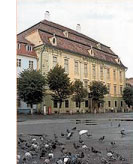 It is said that Sibiu is the best preserved
medieval town in Romania. The city has beautiful,
all-inspiring buildings and turistic sites some of which
of great historical importance. Our opinion is that if
you come to Sibiu a definite must is the Brukenthal
Palace Museum. It's named after the Transylvanian
Guvernor Samuel von Brukenthal who created the museum
from his personal collection of rare manuscripts,
antiquities, fine arts and impresive silverware. Today it
shelters a wide collection of religious artifacts,
Western and Romanian art of great patrimonial and
cultural value. Sibiu also hosts one of the most
prestigious open-air museums in Europe, Astra Village
Museum in Dumbrava Forest, which contains an insight into
the culture, handicrafts and architecture of the
Transylvanian people.
It is said that Sibiu is the best preserved
medieval town in Romania. The city has beautiful,
all-inspiring buildings and turistic sites some of which
of great historical importance. Our opinion is that if
you come to Sibiu a definite must is the Brukenthal
Palace Museum. It's named after the Transylvanian
Guvernor Samuel von Brukenthal who created the museum
from his personal collection of rare manuscripts,
antiquities, fine arts and impresive silverware. Today it
shelters a wide collection of religious artifacts,
Western and Romanian art of great patrimonial and
cultural value. Sibiu also hosts one of the most
prestigious open-air museums in Europe, Astra Village
Museum in Dumbrava Forest, which contains an insight into
the culture, handicrafts and architecture of the
Transylvanian people.
Other interesting places to visit are of
religious importance, more specifically the 18th-century
Catholic Cathedral with its pink marble colonnades,
gold-laced walls and breaf-taking ceiling frescoes; the
gothic Evangelical Church built during the 14th-16th
century as a Catholic basilica, containig the remains of
Mihnea the Bad, the son of Vlad Tepes (a.k.a. Dracula)
and last but not least the Orthodox Metropolitan
Cathedral built in the 20th century to resemble
Istanbul's Hagia Sofia, with its Byzantine style
decorations and an enormous gold chandelier.
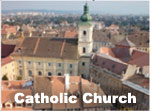 |
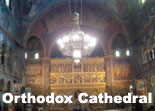 |
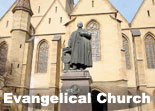 |
 Standing watch over all these architectural
edifiques is the Council Tower, one of the city's
original defenses and the first gathering place of the
city elders.It also has a spectacular view of the Fagaras
Mountains.
Standing watch over all these architectural
edifiques is the Council Tower, one of the city's
original defenses and the first gathering place of the
city elders.It also has a spectacular view of the Fagaras
Mountains.
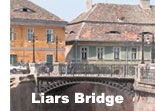 While touring the city you will cross paths with
The Liars Bridge called so because of a legend which says
that whosoever tells a lie while passing it will cause
the bridge to shake.Since we're on the subject of myths
we shall also mention the legend of Hermann, after which the
city gets its secondary german name, that of
Hermannstadt. This legend says that a long time ago a
german called Hermann asked a land-owner for a patch of
land only as big as a bull's hide. The land-owner agreed
but Hermann, using his cunning, cut the hide in a long,
thin wire-like piece which covered a big enough patch of
land to form the base of the city.
While touring the city you will cross paths with
The Liars Bridge called so because of a legend which says
that whosoever tells a lie while passing it will cause
the bridge to shake.Since we're on the subject of myths
we shall also mention the legend of Hermann, after which the
city gets its secondary german name, that of
Hermannstadt. This legend says that a long time ago a
german called Hermann asked a land-owner for a patch of
land only as big as a bull's hide. The land-owner agreed
but Hermann, using his cunning, cut the hide in a long,
thin wire-like piece which covered a big enough patch of
land to form the base of the city.
All these being said we would like to conclude with an invitation to our amazing city full of warm generous people.
Written by: Marcu Alexandru and Calina Razvan
Coordinators: Ana Pica
United Kingdom- Marlborough
Blackett Observatory
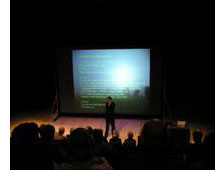 The lecture on Sunday was a great success and was kindly described by one distinguished visitor as 'World Class' ! . Be that as it may, thank you for your assistance in providing initial material. It was an exiting subject to research and present.
The lecture on Sunday was a great success and was kindly described by one distinguished visitor as 'World Class' ! . Be that as it may, thank you for your assistance in providing initial material. It was an exiting subject to research and present.
The Lecture, which took place in the main theatre at Marlborough College, was well attended with approximately 70 visitors of all ages. Many of whom were attending this type of Lecture for the first time. The lecture had been advertised in the local library and in the previous week in the local paper. I had also had a 10 minute slot on local radio. Given our location in the Kennet valley and proximity to Avebury and Stonehenge, all those present felt a real sense of connection and many not only were very familier with Avebury as a site but the audience also included one of my prime reference authors.
Charlie Barclay
Director
Blackett Observatory
Marlborough
Wiltshire
SN8 1PA
www.blackettobseervatory.org
